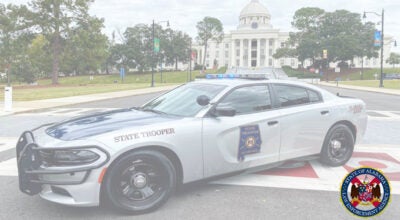Latest version of state congressional map would bring changes to Covington County, if approved by court
Published 5:05 pm Friday, July 21, 2023
|
Getting your Trinity Audio player ready...
|
The latest version of a new Alabama congressional map passed out of the Alabama House and Senate on Friday would mean some changes for Covington County, if it is approved by a judicial panel.
Elected officials worked Friday on redrawing the congressional map as it was the final day to meet a court-ordered deadline.
After both the House and Senate passed their own versions of district maps on Wednesday, the latest version that passed both chambers on Friday has most of Covington moving to Dist. 1, along with Mobile, Baldwin, and Escambia counties. However, in this map, the northeast corner of the county, which extends southward to include at least a portion of Opp, would remain in Dist. 2.
The proposed map would keep Dist. 7 as the lone majority Black district at 51 percent, based on the Black voting age population, down from 56 percent on the current map. It would increase the Black voting age population in Dist. 2, which covers southeast Alabama from 30 percent to 40 percent. Dist. 2 would include Butler and Lowndes counties to the west, Montgomery, Mason and Russell counties to the north, and all the remaining southeastern counties to the Florida and Georgia state lines.
Legislators were required to redraw the state’s congressional districts after the U.S. Supreme Court upheld a lower court’s 2022 ruling that Alabama’s current districts violate the Voting Rights Act. The Allen vs. Milligan lawsuit against the congressional map, which was passed in 2021, stated the map put much of the state’s Black voters into a single district (Dist. 7). In 2022, a three-judge panel agreed, ordering the state to draw new maps that “include either an additional majority-Black congressional district, or an additional district in which Black voters otherwise have an opportunity to elect a representative of their choice.” The panel said the map discriminated against Black voters who represent 25 percent of the state’s population but could only win elections in one of Alabama’s seven districts. The state challenged that ruling, which led to last month’s Supreme Court ruling.
The map passed on Friday was widely rejected by Democrats who favor a map similar to that drawn by the plaintiffs in the lawsuit. That version would mostly maintain Dist. 7, currently represented by Democrat Terri Sewell of Selma, and would create a second congressional district comprised of a Black majority, that stretches from Washington County in the west and extending across Monroe, Conecuh, and Butler counties, continuing to the eastern border counties of Russell, Barbour and Henry. That map would put all of Alabama’s southernmost counties into a single district that stretches from Baldwin and Mobile counties in the west and move eastward to include Escambia, Covington, Geneva, Coffee, Dale, and Houston counties.
In response to the maps passed, a joint statement of the Allen v. Milligan plaintiffs stated, “The Alabama Legislature believes it is above the law. What we are dealing with is a group of lawmakers who are blatantly disregarding not just the Voting Rights Act, but a decision from the U.S. Supreme Court and a court order from the three-judge district court. Even worse, they continue to ignore constituents’ pleas to ensure the map is fair and instead remain determined to rob Black voters of the representation we deserve. We won’t let that happen … We will not rest until the State of Alabama complies with the Voting Rights Act and enacts a map with two districts where Black voters have a real opportunity to elect their candidates of choice and the Legislature fulfills its duty to obey the law.”
The state legislature was to submit a new congressional map to the federal court by Friday. If the court rejects the map, a third party — or “special master” — could be ordered to draw the map for the state.
(Editor’s Note: The Star-News will be updating this story to include more details about the area that will be inside Dist. 2.)






